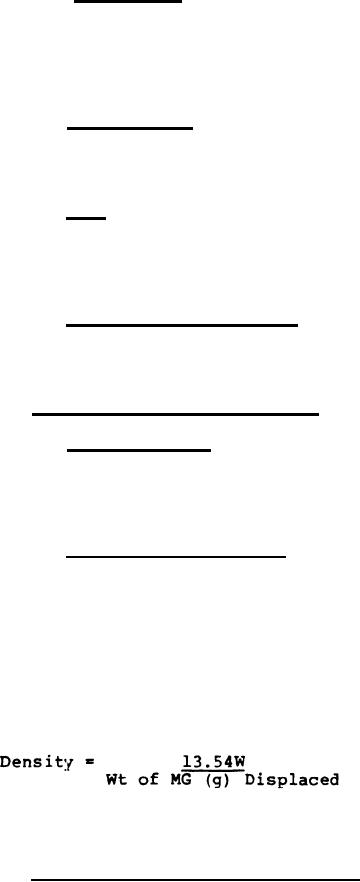 |
|||
|
|
|||
| ||||||||||
|
|  MIL-S-13303G(AR)
4.5.2.3.2 Hand fired. The packed signals shall be conditioned
for a min. of 16 hours at a temperature -65 5F. The packed
signal shall be taken from the conditioning chamber, removed from
the metal container and fired vertically by hand (see 6.4) before
the temperature of the signal is allowed to change. The performance
of the signal shall be observed for compliance with the requirements.
4.5.2.4 Test validity. If for any reason the proving ground
considers that the test conditions have detrimentally affected the
test results, the test shall be declared invalid and a new test
shall be performed with additional samples.
4.5.3 Leakage. The packed sealed container shall be placed in
the test cylinder. Apply air in the cylinder to a pressure of 3 to
5 p.s.i. and hold for eight (8) seconds min. Observe pressure
indicator for a drop in pressure during the holding time.
(Non-Destructive Test)
4.5.4 Container tear strip test. The tear strip of the
container shall be tested in accordance with procedures specified in
MIL-C-10464 for compliance with the requirements specified.
(Destructive Test)
4.5.5 Density of propellant grain.
4.5.5.1 Overall density. The propellant grain shall be
accurately measured, the volume determined and converted to cubic
centimeters. The grain shall then be accurately weighed and the
density in grams per cubic centimeter calculated and compared with
the requirement.
4.5.5.2 Density of any section. Each of the grains shall be
cut into two (2) approximately equal size cylinders. Each cylinder
shall be accurately weighed. Fill the beaker with clean mercury,
(see figure 1) insert the immersing mixture and level off the
mercury by pressing down with the flat glass plate until it is even
with the top of the beaker. Then place the cylinder beneath the
prongs of the immersing fixture and level and mercury by pressing
down with the flat glass until it is even with the top of the
beaker. Catch the excess mercury in a clean evaporating dish.
Weigh the mercury displaced by the cylinder. Calculate the density
of the cylinder as follows:
where:
W = weight of the cylinder in grams
4.5.6 Hydrostatic test of casing tube. The casing tube shall
be tested in any hydrostatic test device capable of applying the
min. pressure for not less than 5 seconds. The tube shall be
observed for evidence of failure to comply with the requirements.
Any test sample which fails to comply with the applicable
requirement shall be classed defective and removed from the lot.
(Non-Destructive Test)
44
|
|
Privacy Statement - Press Release - Copyright Information. - Contact Us |